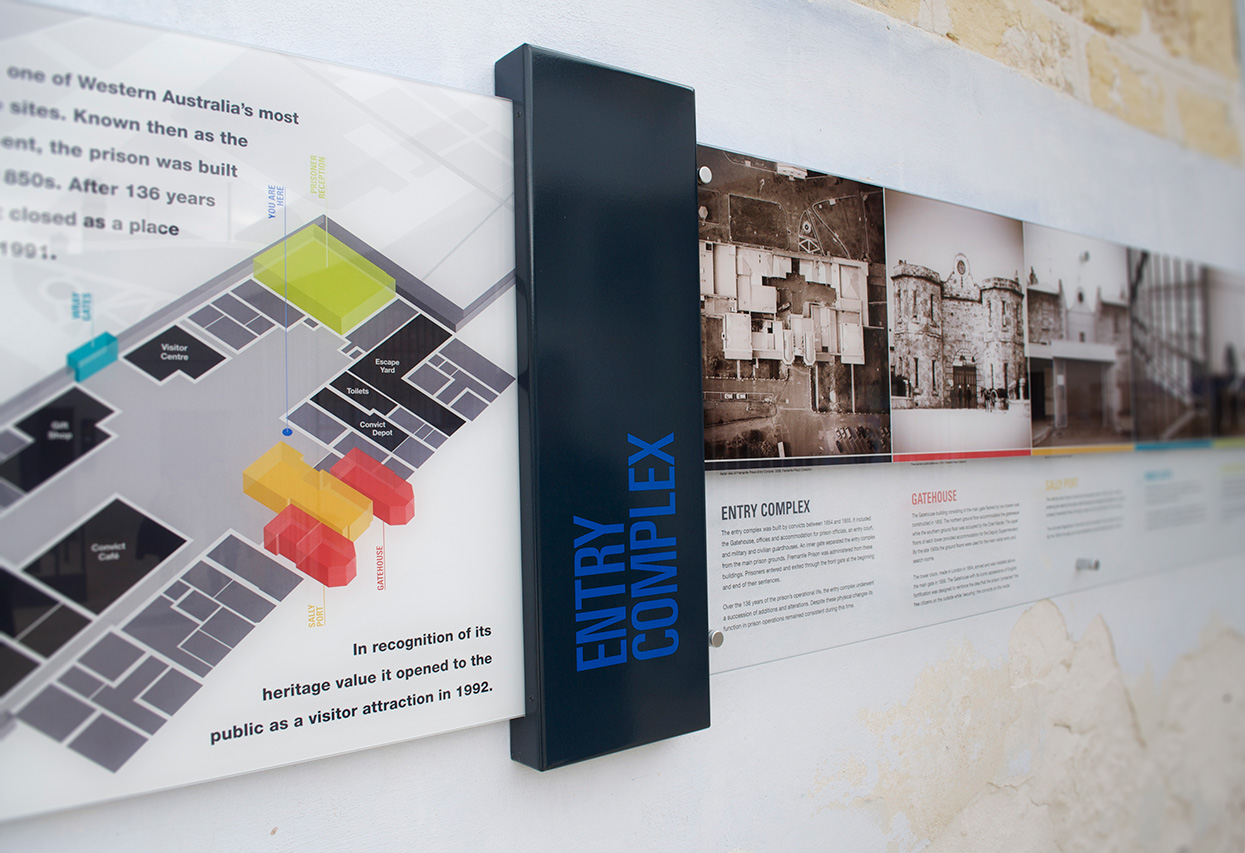Fremantle Prison the first built environment in Western Australia to be inscribed on to the World Heritage List. It is the most intact convict-built cell range in the nation and was the last convict establishment constructed in Australia.
In the lead up to possible World Heritage nomination Axiom were awarded the tender in late 2008 to work with Fremantle Prison to develop a more thematic approach to signage and interpretation throughout the complex to better engage visitors in the story of the prison’s history and enrich their visits.
Our work at Fremantle Prison included:
• Develop a comprehensive signage strategy for Wayfinding, Interpretive, Tour and Information Signage.
• Create signage schedule, oversee fabrication and installation.
The guiding principle of our signage strategy was to ensure new signage would have minimal impact on the physical as well as spatial fabric of the site, but remain clearly identifiable to visitors and where possible have signage serve more than one purpose.
We developed a comprehensive style manual that detailed the proposed colour palettes, image treatments, typeface selections and typographical hierarchies to ensure a harmony between all of the different signage types required would be achieved.
Our strategy also referred to Burra Charter principles, which state that ‘interpretation should enhance understanding, appreciation and enjoyment of the site, and be culturally appropriate’. Signage was designed to be immediately identifiable as an ‘addition’ to the site, and not to be confused with existing fabric.
All of our primary signage vehicles subscribed to these principles; both the Terrace Signage and Courtyard Signage provide wayfinding and orientation for visitors and include an interpretive component detailing the original use and provenance of specific buildings.
These signs facilitate the movement of visitors throughout the prison and enhance their experience by providing an added layer of interpretive and historical information they would otherwise not receive.
We also produced a range of glass interpretative panels that were installed throughout the main courtyard and café. These panels detailed the various uses of the entry complex, preservation and conservation efforts at the prison and general convict history.
Due to the heritage listing, careful consideration was also given to material selection and fixing methods. The size and weight of all materials used was taken into consideration to minimise fixing points into original fabric, and all work was designed to be reversible.
As testament to the success of the partnership, the project received the 2010 Western Australian Heritage Council Awards for “Outstanding conservation and/or interpretation of a place listed on the State Register of Heritage Places”.










